
Autumn is the perfect time for planting fall bulbs for colorful spring flowers. The hottest days of summer have come to an end, and there’s a chill to the air in the evenings. As fall arrives, savvy gardeners know it’s time for planting fall bulbs.
Nothing says “spring is here” quite like flowering hyacinths, crocuses, daffodils and tulips bursting into bloom. If you want these beauties in your garden next spring, fall is the time to plant them.
7 reasons why planting fall bulbs should top your garden list
During the busy fall season filled with harvesting and raking leaves, it’s easy to forget about planting spring blooming bulbs. But planting fall bulbs should be a must on every gardener’s autumn list. Here’s why:
1. Planting fall bulbs is frugal and easy.
Bulbs are very affordable and widely available in fall. You can find a huge variety online and at local nurseries.
2. Spring-flowering bulbs add color when you need it most.
Crocuses and hyacinths are among the first to emerge in late winter, when you’re feeling the most desperate for spring color.
3. Bulbs fit anywhere.
Spring-flowering bulbs are nice, compact plants. They are perfect for filling in empty spots in your garden beds.
4. Animals don’t eat them.
Several varieties of fall bulbs, such as daffodils and hyacinths, are deer and rabbit resistant.
5. They bloom every spring.
When you’re planting fall bulbs, remember that they are perennials. That means they’ll keep coming back every spring, year after year.
6. Bulbs are low maintenance.
After planting, fall bulbs require almost no maintenance. They emerge too early in spring for most pests, never get unruly, and basically take care of themselves. A little deadheading and light fertilizing are all that’s needed.
7. It’s fun!
Planting bulbs in the fall is like hiding buried treasure in your yard. Planting fall bulbs is fun! Especially when you use a Power Planter Auger to drill the holes. (See below for more info.)
Planting Fall Bulbs: The Best Varieties
Not all flowering bulbs should be planted in the fall. In general, summer bloomers like gladiolus and dahlias are best planted in spring. The spring-blooming bulbs highlighted below are happiest when they spend the winter underground.
Here are the best bulbs for planting this fall in your garden.
Jonquieres Tulip is a Superstar
Tulip ‘Jonquieres’ is a stunning addition to any yard or garden. This gorgeous flower is a long-lasting double-petalled tulip that features creamy petals splashed with magenta accents. The magenta softens to a bright pink as the blooms mature.
The stunning flower, which resembles a lush peony, grows best in full sun or partial shade. In addition to looking beautiful in the spring garden, the blooms make wonderful cut flowers because they add a dramatic touch to any floral display.
“Jonquieres is the most beautiful tulip I have ever seen,” says Ben Rotteveel, owner of DutchGrown, who has been in the flower bulb business for more than 30 years. Available in packages of 10, 25 or 100 bulbs. Click here to buy.
Affaire Tulips
For a more traditional-shaped tulip, grow Affaire Tulips (Tulipa ‘Affaire’). One look and you can see why this variety is a favorite among both brides and professional florists. An Affaire Tulip has white petals that are edged with bright magenta.
The classic shape of these tulips is a great way to great a new spring season. In full flower, the tulips stand 18 to 20 inches tall. The color of the flowers look stunning against the background of the wide green leaves. Affaire Tulip petals look especially beautiful when set against an evergreen tree, a fence or a wall, so the colors really “pop.”
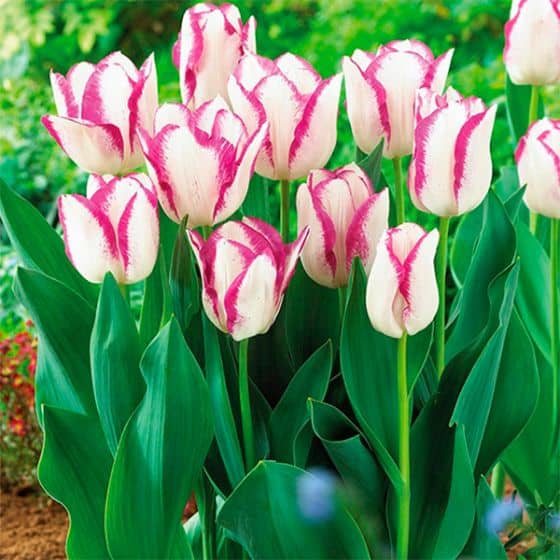
Plant enough of these delightful tulips so you won’t mind cutting some of the flowers and using them indoors in flower arrangements. Affaire Tulips grow best in USDA Zones 3-7, where they will get a good winter chill before spring arrives. A 10-pack of bulbs is available from Nature Hills Nursery.
Perfect Pastel Colors
Bright colored flowers are awesome, but spring is also the time for lovely pastel shades. The Tulip Perfect Pastel Collection is an expertly curated selection of the finest pastel-colored tulips available. This soft-hued, romantic collection of tulips features shades of lilac, light pink and soft apricot. These flowers not only look great, but they have a lovely fragrance, too.
These are triumph tulips that grow up to 16 inches tall and bloom in early to mid-spring. They grow best in full or partial sun and are cold hardy to USDA zone 3. The Tulip Perfect Pastel Collection is available exclusively from www.DutchGrown.com.
Mixed Triumph Tulips
There are so many different types of tulips! Sometimes you don’t want to be limited to one specific type of tulip bulbs. That’s when pre-mixed combinations of bulbs that offer a rainbow of colors is the right choice.
Triumph Tulips is a large group of tulip bulbs that includes many different specific cultivars. Triumph Tulip flowers are single-petaled and cup-shaped. (No frilly edges or parrot-shaped petals in the Triumph family!) They bloom in a wide assortment of colors in the mid-to-late spring.
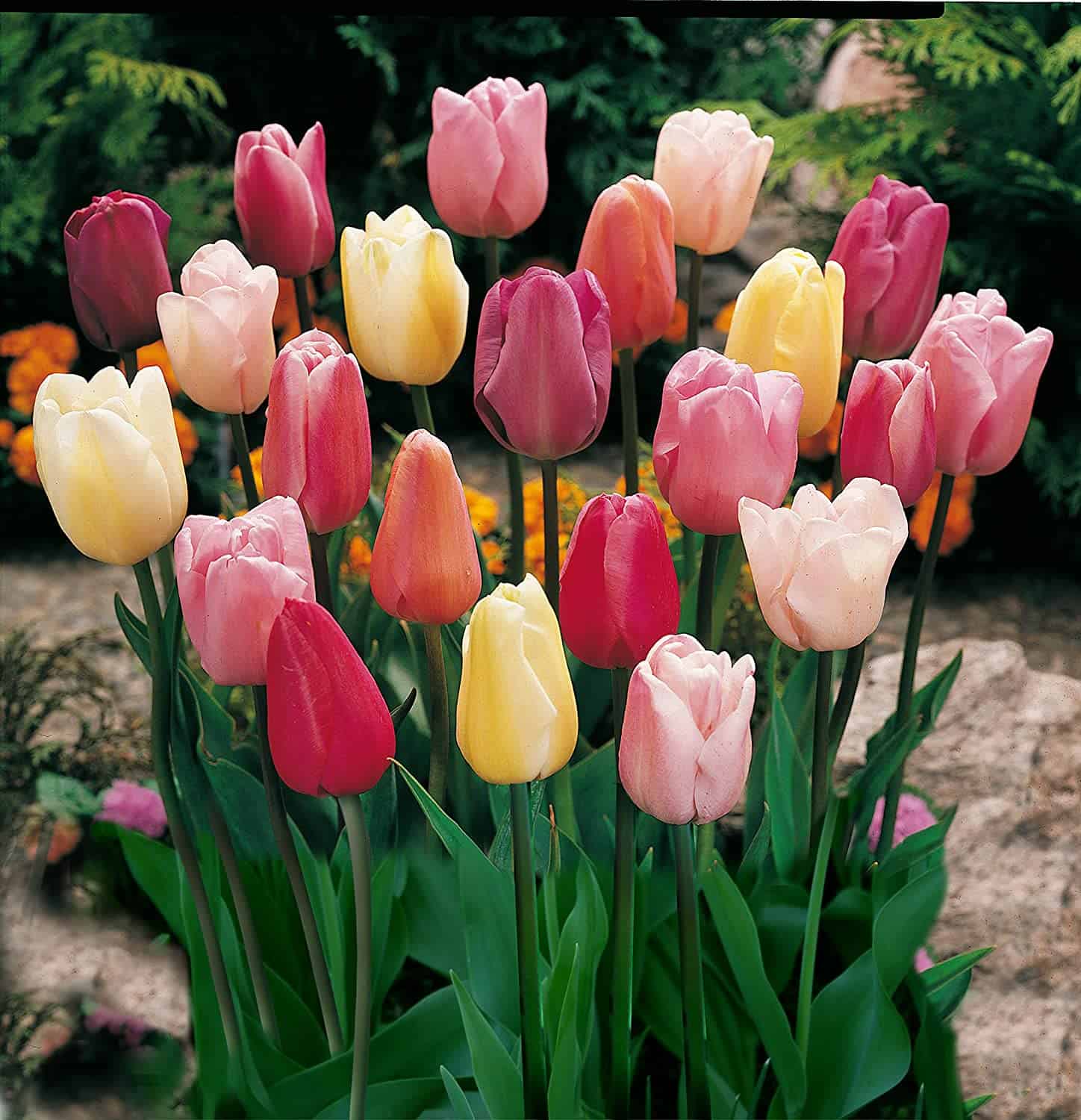
The Mixed Triumph Tulip Collection includes bulbs that bloom in shades of red, yellow and pink. The flowers sit on sturdy stems that are 18 to 24 inches tall. They are tough enough to handle the wind and rain of springtime and still look great. Like all tulips, Triumph Tulips grow best in full sun when planted in well-drained soil.
There’s one more great thing about tulips. In addition to their beauty, tulip petals are edible. Check out these Recipes for Tulip Petals and other spring flowers!
The varieties and collections above are among our favorites, but there are hundreds of other tulip cultivars and collections. Check out the Full Selection of Tulip Bulbs.
Dutch Master Daffodil
Daffodils are another popular choice when planting fall bulbs. Yellow is the color that instantly comes to mind when thinking of daffodils. The classic, heirloom varieties of daffodils are all bright yellow. And they are gorgeous. Plus, when it comes to naturalizing in the landscape, daffodils are the champions. That means they bloom every spring–virtually forever.
If you love yellow daffodils, you’re going to love an improved variety called Dutch Master. This variety, officially called Narcissus Dutch Master, is a bright and sunny shade of yellow. It is resistant to pets and diseases. Squirrels will leave daffodil bulbs alone, including this variety.
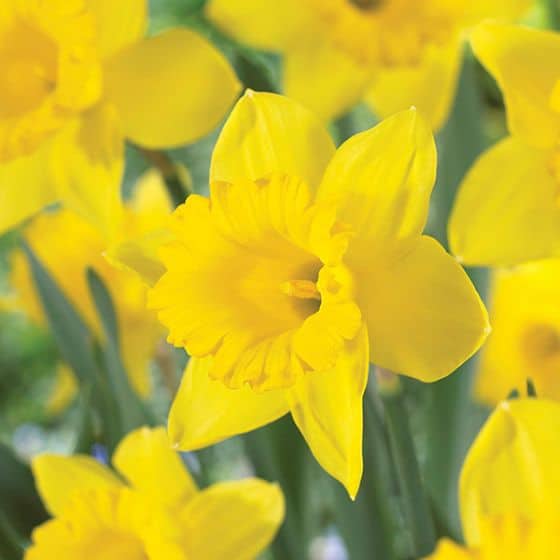
A Dutch Master bulb will always produce one large flower on a strong stem that will grow 16-18 inches tall. The flower’s trumpet is large and frilly. The flowers are huge, and they look spectacular in the garden and wonderful as a cut flower in a vase. Bulbs are available in 5-packs, 8-packs and 40 packs from Nature Hills.
Butterfly Daffodil Mix
Daffodils are always bright and cheery. But if you want to go beyond the classic yellow daffodils, there are now shades of yellow, white and pastel orange to brighten your garden.

With a cloud of sweet color and fragrance, the Butterfly Daffodil Mix begins the spring season with white petals surrounded by ruffled trumpets of yellow, peach and light orange. This Narcissus mixture is named for the petal cups that open almost like butterfly wings. They might look delicate, but like other daffodils the flowers are tough and long-lasting. Enjoy them in a flower bed, at the edge of a driveway, or indoors as cut flowers.
Butterfly Daffodil Mix is an easy-to-care-for gem that is deer and rodent resistant. A bag of 8 bulbs can be purchased online at American Meadows.
Rijnveld’s Early Sensation
Rijnveld’s Early Sensation may look like a normal, yellow, daffodil—but it’s not. This beauty is an ultra-early bloomer. In fact, it often blooms in January in the test gardens of Brent and Becky’s Bulbs in Gloucester, Virginia—even through the snow. Plant this bulb where the neighbors can see it, and they’ll turn “yellow” with envy. Another good spot for this beauty is in a flower bed against a south-facing wall (for the absolutely earliest of blooms) or near an entryway where everyone will see it when they come to visit.
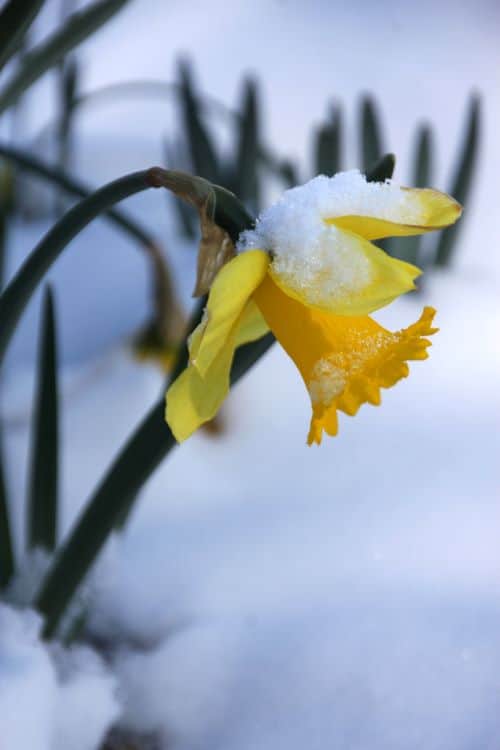
Rijnveld’s Early Sensation will quickly become one of your favorite spring flowers. Just when you’re a little stir crazy and ready for some spring color, this daffodil emerges to give you hope that spring is just around the corner. Plant this bulb in USDA Zones 3-8 in a sunny location and it will reach 12-14 inches tall. Five bulbs sell for $6.50 from BrentandBeckysBulbs.com .
The varieties and collections above are among our favorites, but there are dozens of other daffodil cultivars and collections. Check out the Full Selection of Daffodil Bulbs.
Colorful Crocus Mix
Crocuses are known as the harbinger of spring because they are typically the first flowers in the garden. In some years, Crocus bulbs start blooming before the last of the winter snow has melted. Another great thing about Crocuses is how easily they can naturalize in the landscape, flowering year after year.
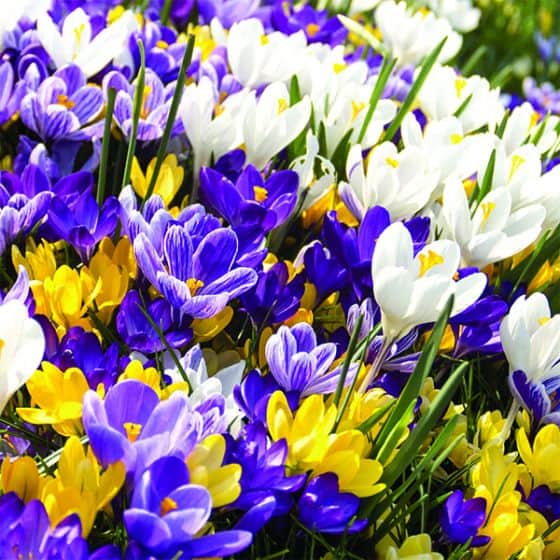
But there are so many delightful colors of crocus flowers, how do you pick just one? Well, you don’t have to settle for one color. The Colorful Crocus Mix combines purple, white, yellow and striped colors into one outstanding display of crocus flowers. Call it the Disney World of crocus combinations. This mix contains these varieties: Jeanne d’Arc, Golden Yellow, Pickwick, and Flower Record. It’s a beautiful palette of color.
The large 3- to 4-inch blooms put on a colorful show and look great while framed by the bright green foliage. The plants stay small—just 4 to 6 inches tall and 4 inches wide. Deer and other nibbling animals tend to leave these bulbs alone. Mass plantings make great borders for perennial gardens. Crocus bulbs thrive in USDA Zones 3-8, making them a great choice for many gardens. A 15-pack of bulbs is available from Nature Hills.
There are more varieties and wonderful combo mixes of crocus. Visit the Full Selection of Crocus Bulbs.
Allium Accents
Alliums are large, showy, globe-shaped flowers that command attention with their size and color. The Artful Accents Allium Bulb Collection adds beauty and textural accents to any late spring or early summer garden. With flower colors ranging from bright white to silvery pink to light purple, these blossoms are impossible to ignore.
The flower shapes and the petal variations give this bulb collection a look that other bulbs simply cannot match. Plant these bulbs together for a dramatic display. Or, spread them throughout the garden as focal points. The 50-bulb collection is available from www.AmericanMeadows.com.
Click here to see the Selection of Allium Bulbs on Amazon.
Valentine Hyacinth Mix
Hyacinth bulbs (Hyacinthus) are another popular flower in the spring garden. The hyacinth flower stalk is covered with racemes (clusters) of small flowers. The flowers are sweetly fragrant, filling the air with the smell of springtime. The blooms are quite long lasting, and the strong stems refuse to topple even in strong spring winds or rainstorms.
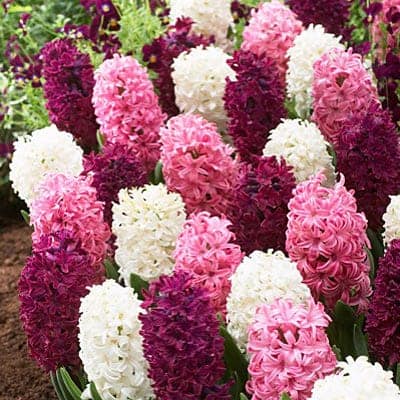
The traditional color for hyacinth flowers is blue. But other colors are also available, including white, pink and purple. The Valentine Hyacinth Mix is a combination of all the colors associated with the lover’s holiday, including bright pink, passionate red and pure white. This mix of colors creates an attention-grabbing spot in the spring flower bed, when bright colors are hard to come by in the garden. A 6-pack of Valentine Hyacinth Mix bulbs is available from AmericanMeadows.com.
Click here to see the complete Selection of Hyacinth Bulbs on Amazon.
Starflower Collection
Ipheion, more commonly known as Starflower, might just be the longest-blooming bulb in the spring garden. The Starflower Collection offers profusion of small, 1-inch-wide, star-shaped flowers in a range of blue and white tones. This starflower mix features three different varieties of Ipheion bulbs– ‘Rolf Fiedler’, ‘Froyle Mill,’ and ‘Album’ for a pure white shimmer.
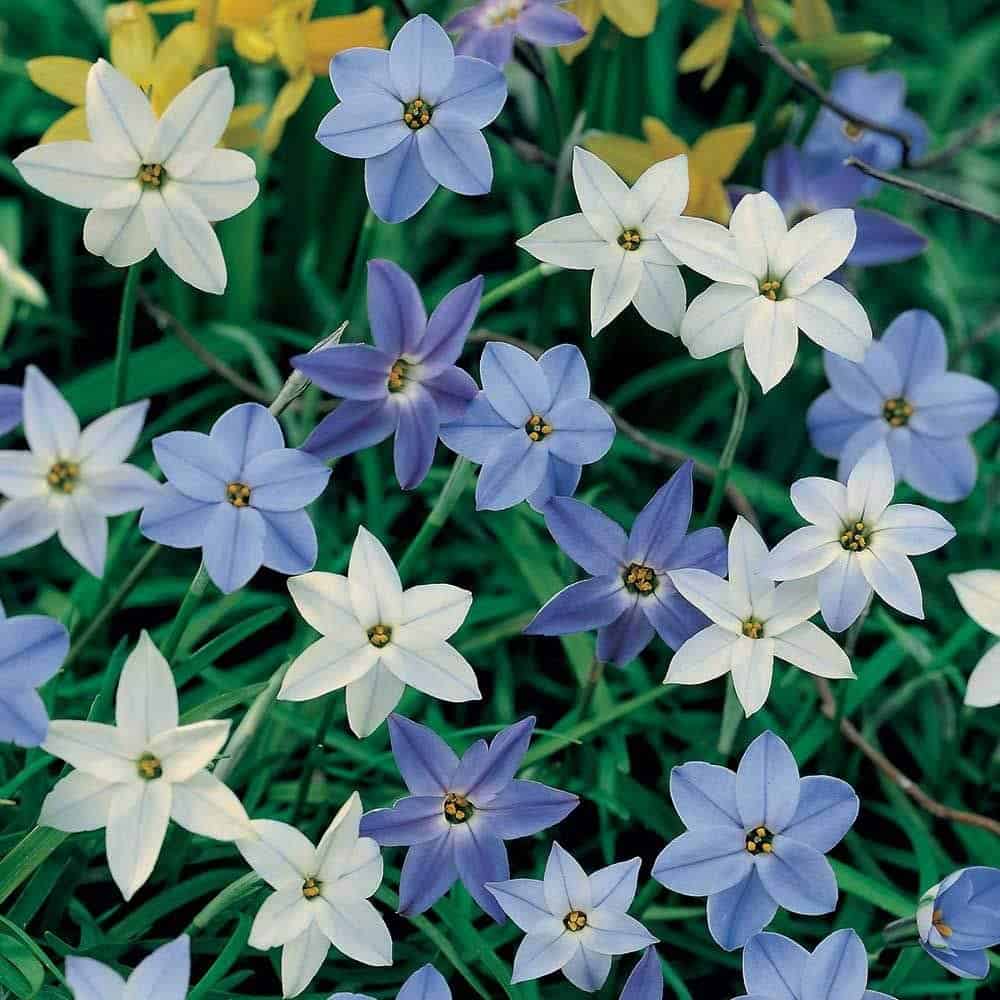
Perhaps best of all, the flowers bloom in the beginning of the spring season (when gardens need color the most). And then they bloom again in the fall. The blossoms have a pleasant aroma, and the foliage has an onion-like scent that is effective in repelling nibbling animals like rabbits and deer. When not in bloom, the little plant reaches just a few inches tall. The foliage often goes dormant in the heat of summer and reappears in the fall.
Starflowers thrive in USDA Zones 5-9, making it a good choice for warmer climates. The Starflower Collection contains 50 bulbs.
A step-by-step guide to planting fall bulbs
- Choose the best planting sites. Select spots near walkways and patios where the flowers will be most visible. Most spring-flowering bulbs aren’t too picky about growing conditions, as long as the soil drains well.
- Select and order your favorite bulbs.
- Plant at the right time. Bulbs do best when planted as the ground starts to cool down in early- to mid-autumn, but not so late that they’ll freeze right away. A good rule of thumb is to wait until evening temperatures consistently cool down to 40-49 degrees F. For most climates, this will be about 6 weeks before the average first frost date.
- Dig a hole for each bulb. To make the job easier, use a handy planting tool called a Power Planter Auger. A planting auger is a tool that fits right into a hand-held power drill. The auger quickly drills holes into the soil that are perfect for planting fall bulbs. (These tough augers come in a variety of sizes for different garden and landscape jobs.)
- Add a little compost into the hole and drop in a bulb (pointy side up).
- Gently fill in the hole with the loose soil and pat it down.
- Water well to encourage the bulb to start growing roots.
- Give your buried bulbs a little water during really dry spells in winter.
———————————-
Please follow the Home Garden and Homestead page on Facebook.
Home Garden and Homestead participates in online affiliate programs. We receive a commission for sales generated by our story links. Thank you for supporting this website!


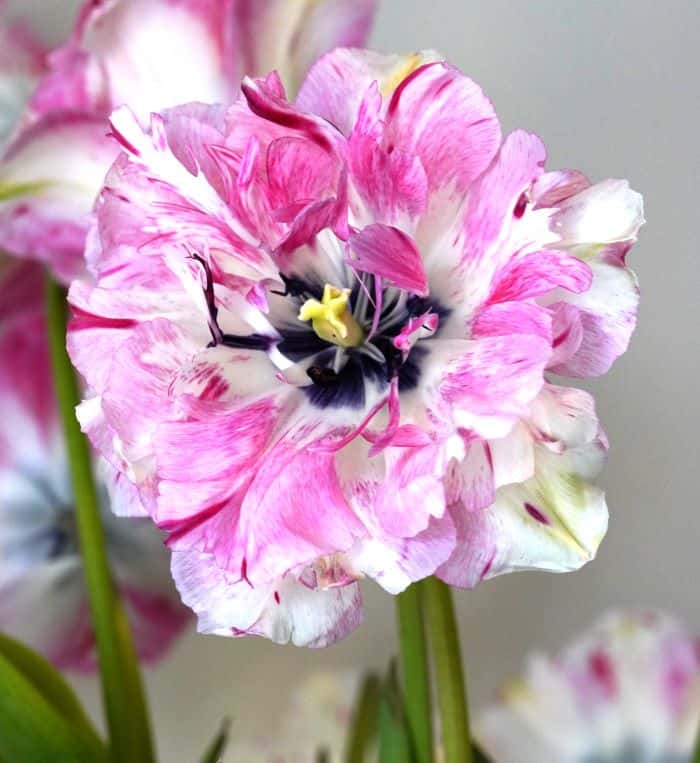
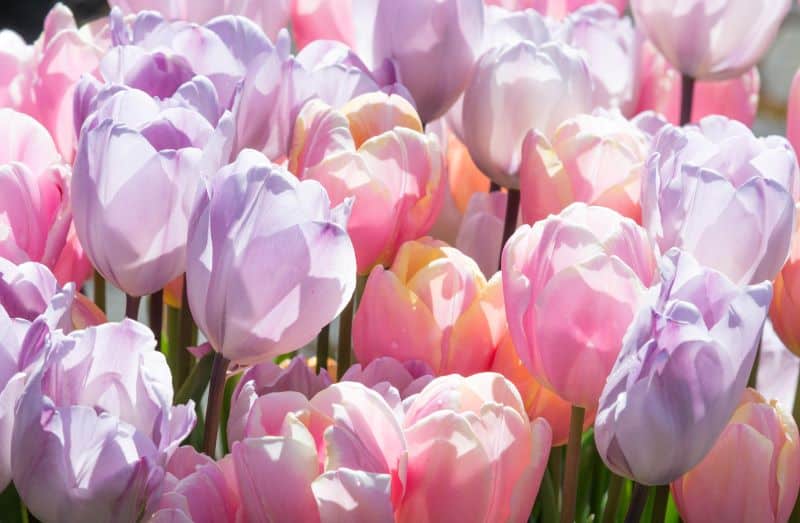
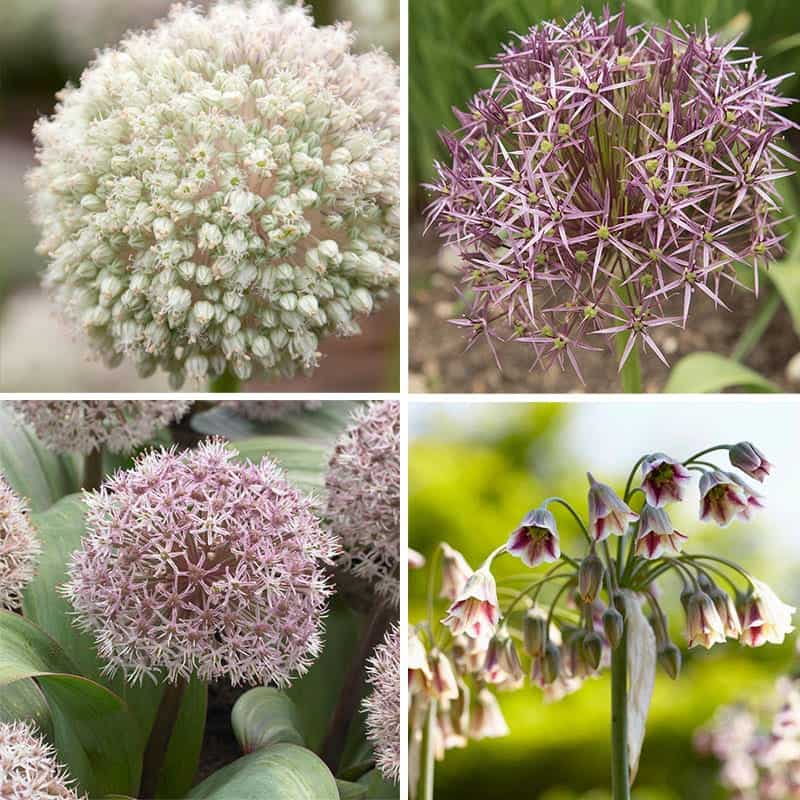


Leave a Reply